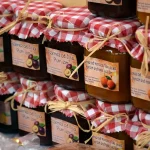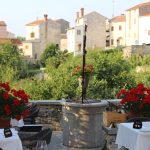April the 18th, 2025 – Croatian rural tourism is on the rise in terms of overall popularity, and it could provide a more concrete chance for overlooked continental and eastern parts of the country.
As Glas Slavonije/Voice of Slavonia/Ivica Getto writes, the Croatian Rural Tourism Association has announced that there are more than 1,600 service providers operating in special forms of tourism in the country. That number could be even higher.
croatian rural tourism is a chance for overlooked areas of the country

The above is the main conclusion of the analysis, which for the first time included not only Croatian rural tourism, but also cultural, adventure, health, equestrian, hunting and fishing tourism. That also naturally included the activities of local associations operating in rural areas. The analysis used data collected for the development of a central website for Croatian rural tourism, which the aforementioned association has revealed will be published by the end of April. The upcoming legal definition of rural agro-tourism will also be published at a similar time.
special forms of tourism

According to the analysis, there are 140 service providers in special forms of tourism across Osijek-Baranja County, which is significantly more than in Split-Dalmatia County. Despite continental and eastern Croatia having the edge as far as this form of tourism is concerned, Brod-Posavina (24) and Virovitica-Podravina (28) counties remain at the very bottom of the list, while Istria (237) and Dubrovnik-Neretva (192) counties are in the lead in terms of numbers. The analysis further showed that, out of a total of 1600 service providers recorded in all analysed special forms of tourism, 1119 or 70% are engaged in Croatian rural tourism, or agrotourism. This is followed by service providers in cultural (176), adventure (122), fishing (72), equestrian (54), hunting (42) and health tourism (12).
It’s noticeable that regions far from the dazzling coastline are lagging considerably behind in the number of rural cultural attractions managed by service providers. There are only 12 rural cultural attractions in Osijek-Baranja County, 8 in Virovitica-Podravina, 6 in Vukovar-Srijem, and 4 respectively in Brod-Posavina and Požega-Slavonia. Although there are numerous cultural attractions across rural Croatia, a relatively small number of them have been put into the function of tourism. The reasons for this are multiple. First, we have the typically dilapidated state of involved buildings (old forts, castles, etc.) or renovation processes that failed to ensure their sustainable management. This also applies to the beautiful castle of Eugene of Savoy in Bilje, which is at least awaiting renovation. This is rather unlike the one in Dardanje, which is, for now, doomed to ruin. A shining example is Tikveš Castle, converted into a modern Presentation and Educational Centre.
Another branch of special forms of tourism is formed by adventure (and equestrian) tourism, which includes adrenaline parks and various adventures such as rafting, river kayaking, sport climbing, and so on. Eastern Croatia is located in the middle of the scale in terms of the number of such facilities, with Osijek-Baranja County recording the largest number of service providers in fishing and hunting tourism. It isn’t really surprising that this is the case, since Baranja is among the leading regions in Croatia in terms of the richness of its fishing waters. It is therefore far from uncommon for guests to go to eastern Croatia solely to fish at one of the local fishing grounds, canals, or along the Danube or Drava. It’s also worth mentioning Somijada – a catfish hunting competition, which is held every year on the Topoljski Dunavec, and the popular Puškaš, which attracts fishermen from across the country.
hunting for croatian authenticity

Hunting is a story in and of itself. The data on this is mostly held by Croatian Forests (Hrvatske šume), which manages Croatia’s largest hunting areas. Although Croatian rural tourism primarily involving hunting and fishing largely depends on the geographical characteristics of each given county, a relatively small number of service providers have been recorded even in counties that have geographical predispositions for development in this direction. Their further development in line with tourism trends is desirable, for which it is necessary to ensure a coherent approach in cooperation with concessionaires and service providers, including local associations.
“Although this is unofficial data, we can be relatively pleased with the large increase in the number of service providers compared to 2012. This is the result of the high demand from both domestic and foreign guests and tourists desiring an authentic Croatian experience. The latter is only continuing to grow, as are very significant investments by service providers and the use of funds from various sources. We’d like to invite those involved to check and update their data as soon as possible so that we can have a more accurate picture, based on which we can jointly advocate for the further development of Croatian rural tourism and its well-deserved promotion. The data can be checked and submitted via our website,” emphasised Aleksandra Kuratko Pani, head of the Rural Tourism Association.
When it comes to the flat swathes of the Slavonian counties, it’s important to emphasise that local or regional self-government units, and even the state, are also working to attract tourists. They finance numerous events, some of which are characteristic of Slavonia and Baranja and have become globally famous.
It should also be emphasised that the story related to special forms of tourism is related to the entire year, which is something that tourist boards in eastern Croatia are known to lean towards. Admittedly, winter is always the weakest part of the year, while spring brings many weekend guests flooding back, and the same will be true with the upcoming extended Easter weekend.
croatian rural tourism is constantly recording higher numbers

Surprisingly positive results were shown by the analysis of Croatian rural tourism, which was carried out by farmers who provide tourism and/or hospitality services. A large number of them are also engaged in the preservation and promotion of the cultural heritage of the Croatian countryside.
Slavonia and Baranja are ideal grounds for the development and operation of Croatian rural tourism for an array of reasons, as the analyses also show. Osijek-Baranja County ranks third with 95 providers of such services, behind Istria (196) and Dubrovnik-Neretva (168) counties.
As stated, Virovitica-Podravina and Brod-Posavina counties are at the bottom of the list. Analyses show that, with the exception of Osijek-Baranja County, other Slavonian counties (which have recorded significant depopulation) have turned to the development of other forms of tourism.
In any case, according to the currently available data, the number of Croatian rural tourism providers is on the up. This is welcomed by Osijek-Baranja County. The tourism industry there has revealed that new accommodation capacities related to this form of tourism are opening up quite often and that more and more stakeholders are trying to attract a larger number of guests, and most importantly, retain them.












